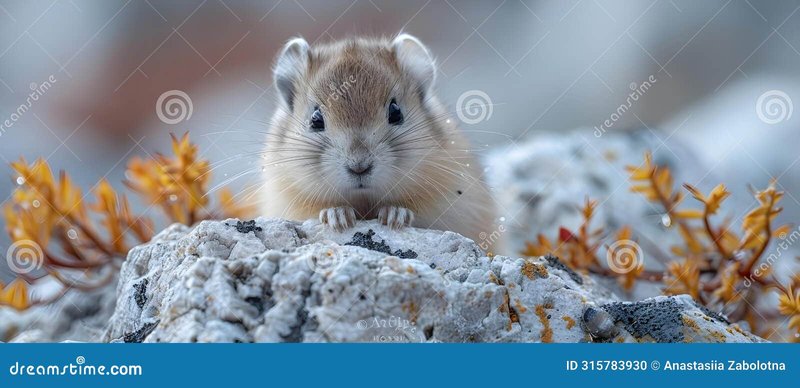
Lemmings are found mainly in the Arctic and subarctic regions, where they play a crucial role in the ecosystem. They’re a vital food source for many predators, including foxes, owls, and even larger mammals. Just like how ants are essential to a garden’s health, lemmings are key players in their habitats. However, various factors are putting their populations at risk. So, let’s explore the current conservation status of lemmings and what it means for their future.
Understanding Lemming Species
Let’s start with the basics: not all lemmings are created equal. There are several species of lemmings, but the most well-known are the Norway lemming, the brown lemming, and the collared lemming. Each species has adapted to different environments, but they share some common traits—like their round bodies, short tails, and relatively fast reproduction rates.
Interestingly, lemmings are known for their population cycles. Every few years, their numbers can swell dramatically, only to crash soon after. This fluctuation can confuse people into thinking their populations are always in danger. But are these natural cycles influencing their conservation status? Let’s dig a bit deeper.
The Current Conservation Status of Lemmings
So, are lemmings considered endangered? The answer isn’t straightforward. While some species, like the Norway lemming, are not currently classified as endangered, others are facing significant challenges. For example, the collared lemming is experiencing population declines due to climate change and habitat loss.
According to the International Union for Conservation of Nature (IUCN), the conservation status of lemmings varies widely. Some species are thriving, while others may be edging toward vulnerability. This disparity means that conservation efforts must be tailored to each species and its specific needs.
Here’s a breakdown of things that put lemmings at risk:
- Habitat Loss: As humans expand into the Arctic regions, lemmings are losing their natural homes.
- Climate Change: Melting ice caps and changing vegetation patterns affect food sources.
- Predation: An increase in predators due to changing ecosystems can put more pressure on lemming populations.
Why Are Lemmings Important to Their Ecosystem?
You might be wondering why anyone should care about lemmings. After all, they’re just small rodents, right? Well, here’s the thing: lemmings play a critical role in their ecosystem. They help maintain the balance of their habitats by being a primary food source for many predators. In this way, they contribute to the overall health of their environment.
When lemming populations fluctuate, it causes a ripple effect. For example, if there are fewer lemmings, then foxes and owls may struggle to find enough food. This decline can lead to reduced predator populations, which can further disrupt the ecosystem. By protecting lemmings, we’re ultimately safeguarding the entire Arctic ecosystem.
Conservation Efforts and Challenges
Conservation groups are stepping up to help lemmings, but it’s not an easy task. Efforts typically focus on habitat protection and restoration. This means securing areas where lemmings thrive and ensuring that their habitats remain suitable for living and breeding.
However, conservation efforts face several challenges:
- Funding: Securing money for conservation can be tough, especially in remote areas.
- Research: Understanding lemming population dynamics requires thorough study, which takes time.
- Public Perception: Many people still only know the myths about lemmings, making it hard to gather support for their conservation.
To overcome these challenges, raising awareness and encouraging public engagement is essential. Familiarizing people with lemming behaviors and their role in the ecosystem can shift perspectives from viewing them as mere myths to recognizing their importance in nature.
How You Can Help Lemmings
Feeling inspired to make a difference? There are many ways individuals can contribute to lemming conservation efforts. Here are a few ideas:
- Support Conservation Organizations: Donating to groups working to protect Arctic habitats can make a significant impact.
- Spread Awareness: Share information about lemmings on social media or in conversations to help combat misconceptions.
- Participate in Eco-Tourism: Visiting Arctic regions with responsible operators helps fund local conservation efforts.
Every little action helps! Even if you don’t live in the Arctic, your voice can contribute to making a change for these fascinating creatures.
The Future of Lemmings in a Changing World
As we look ahead, the future of lemmings hangs in the balance. With climate change continuing to impact ecosystems globally, lemmings are one of many species feeling the pressure. Some experts are hopeful that conservation efforts will help stabilize their populations, but it will require collaboration and commitment from all of us.
Here’s the bottom line: With every small step, whether it’s raising awareness or supporting habitat protection, we can contribute to a brighter future for lemmings. Let’s keep the conversation alive and work together to ensure these little creatures don’t just survive, but thrive.
In conclusion, while lemmings may not be classified as endangered across the board, their populations are facing real threats. Understanding their importance and taking action can help protect them for generations to come. So, the next time you hear about lemmings, think beyond the myths and consider the vital role they play in our world. Together, we can make a difference!
